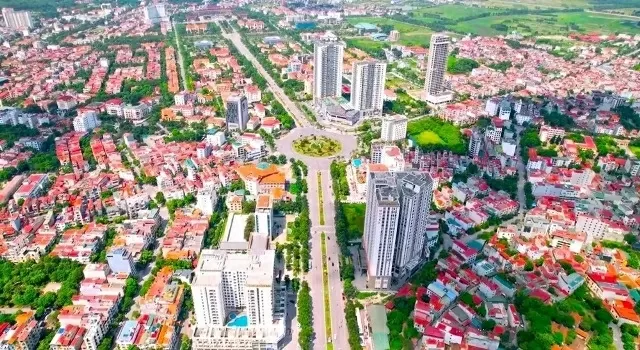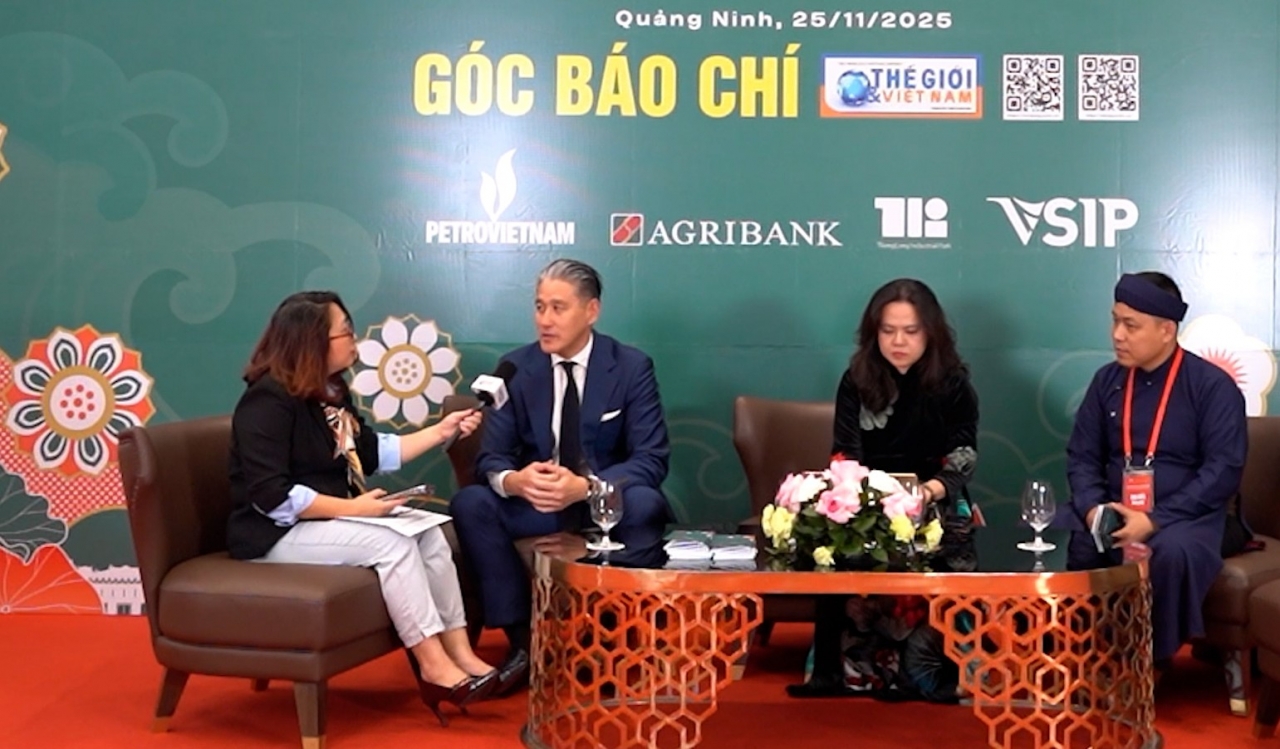
New Bac Ninh province sets target of 212 billion USD in total import-export turnover by 2030
Latest
 |
| New Bac Ninh province sets target of 212 billion USD in total import-export turnover by 2030: According to the draft socio-economic development targets for the new Bac Ninh Province, there will be 22 main targets for the 2026–2030 period. (Photo: Kinh te Do thi) |
Attending the conference were the Standing Vice Chairpersons of the Provincial People’s Councils, Vice Chairpersons of the People’s Committees, as well as Directors of departments and Heads of agencies from both provinces.
The conference focused on exchanging and discussing three key documents: the draft report on the socio-economic development targets for the new Bac Ninh Province for the 2025–2030 period; the report on the review of mechanisms and policies of Bac Giang and Bac Ninh provinces; and the report on the pilot operational plan for the two-tier government model, plan for announcing the National Assembly and Standing Committee Resolutions on the reorganization of administrative units at provincial and commune levels.
According to the draft socio-economic development targets for the new Bac Ninh Province, there will be 22 main targets for the 2026–2030 period. Notable targets include: an average annual GRDP growth rate of 10.5–12.5%; and a per capita GRDP of 8,500 USD by 2030. By 2030, the total import-export turnover is expected to reach 212 billion USD. For the 2026–2030 period, state budget revenue is projected at 375.7 trillion VND, with 88.6 trillion VND in 2030 alone. Local budget expenditure during this period is expected to reach 279 trillion VND. By 2030, 100% of communes are to meet the new rural standards, with over 50% achieving the advanced new rural model and 30% meeting exemplary rural standards. Bac Ninh aims to become a new-style rural province before 2030.
The rate of collection and treatment of common industrial waste, hazardous waste, and medical waste in accordance with regulations is targeted at 100%. By the end of 2027, the province also aims to have no more poor households.
In discussing the socio-economic development targets, there were opinions proposed recalculating certain targets in the agricultural sector. For example, the target of having all communes meet the new-style rural standards by 2030 was suggested to be revised to 90% of communes meeting the standard, with over 50% of those meeting the advanced new-style rural standards.
It was recommended that the goal of eradicating poverty in Bac Ninh province by 2030 replace the previously set target of eliminating poverty across the province by the end of 2027.
As for the target of collecting and treating 100% of ordinary industrial waste, hazardous waste, and medical waste in compliance with regulations, it was suggested to revise the figure to 95% to ensure feasibility.
 |
| The deputies attending the conference discussed a number of issues related to the restructuring and organization of the administrative apparatus. (Source: Bac Giang Newspaper) |
Regarding the report on the review of mechanisms and policies of the two provinces, deputies expressed strong consensus on social welfare policies and several particularly advantageous special policies. Notably, within the five groups of social welfare policies, it was proposed to add school milk and public lighting policies. Speaking at the conference, Ms. Lam Thi Huong Thanh, Standing Vice Chairwoman of the Bac Giang Provincial People's Council, noted that in recent times, social welfare policies have been implemented promptly, sufficiently, effectively, and with transparency. She also proposed that the school milk policy should be made free of charge for poor and near-poor households.
As for the report on the trial operation plan of the two-tier government model and the plan for announcing the Resolution of the National Assembly and the Standing Committee of the National Assembly, the People’s Committees of both provinces have drafted directives to prepare necessary conditions for the new commune-level governments to operate. It was proposed to select 18 commune-level administrative units for pilot implementation (one central unit from each district-level administration), from which lessons can be drawn for broader implementation across the province.
Concluding the working session, Mr. Vuong Quoc Tuan and Mr. Nguyen Viet Oanh emphasized that the formulation of socio-economic development targets must align with those of centrally run cities. Bac Ninh, as a key economic growth hub of northern Vietnam and the nation as a whole, is expected to develop a green, clean, and modern industrial and service economy, based on a knowledge economy, science and technology, innovation, and digital transformation.
The province is envisioned to have a modern and synchronized socio-economic infrastructure system with inter-provincial, inter-regional, and international connectivity; ensuring national defense, security, and social order and safety; creating a stable and attractive investment and business environment; and comprehensively caring for and improving the quality of life and happiness of its people. The deputies agreed to propose raising the target for per capita GRDP by 2030 to between 8,800 and 9,200 USD.
Regarding the new-style rural development targets, it was recommended that for localities not aiming for urban ward status, they must meet the criteria for advanced new-style rural areas. At the same time, the Department of Justice was assigned to coordinate with relevant units to revoke 34 documents and apply adjustments to 45 documents applicable within the new Bac Ninh province; accepted the proposal to provide free school milk for poor and near-poor households.
Furthermore, the Departments of Home Affairs of the two provinces were tasked with discussing in detail the pilot simulation of the two-tier government model and preparing a specific plan to jointly announce the National Assembly’s and the National Assembly Standing Committee’s resolutions on the administrative reorganization at provincial and commune levels.





















